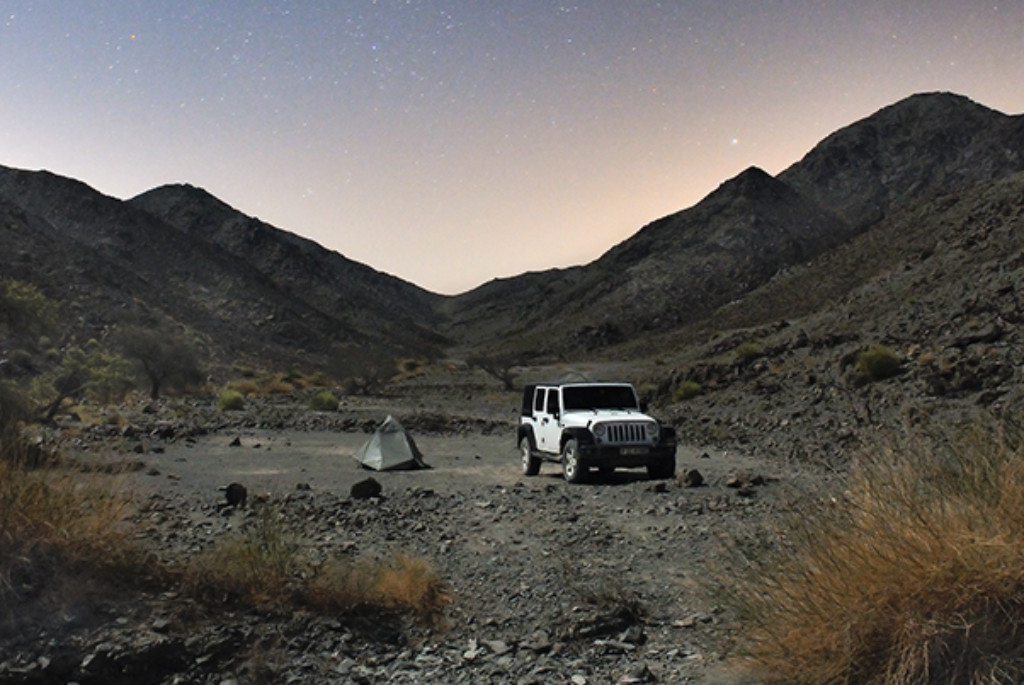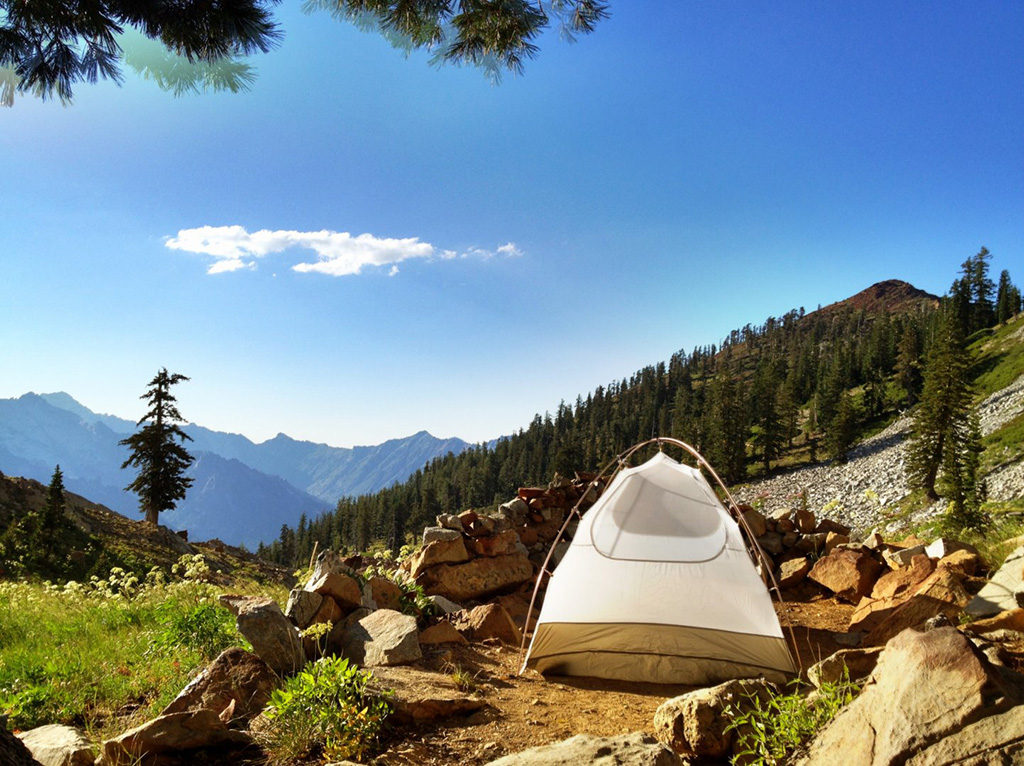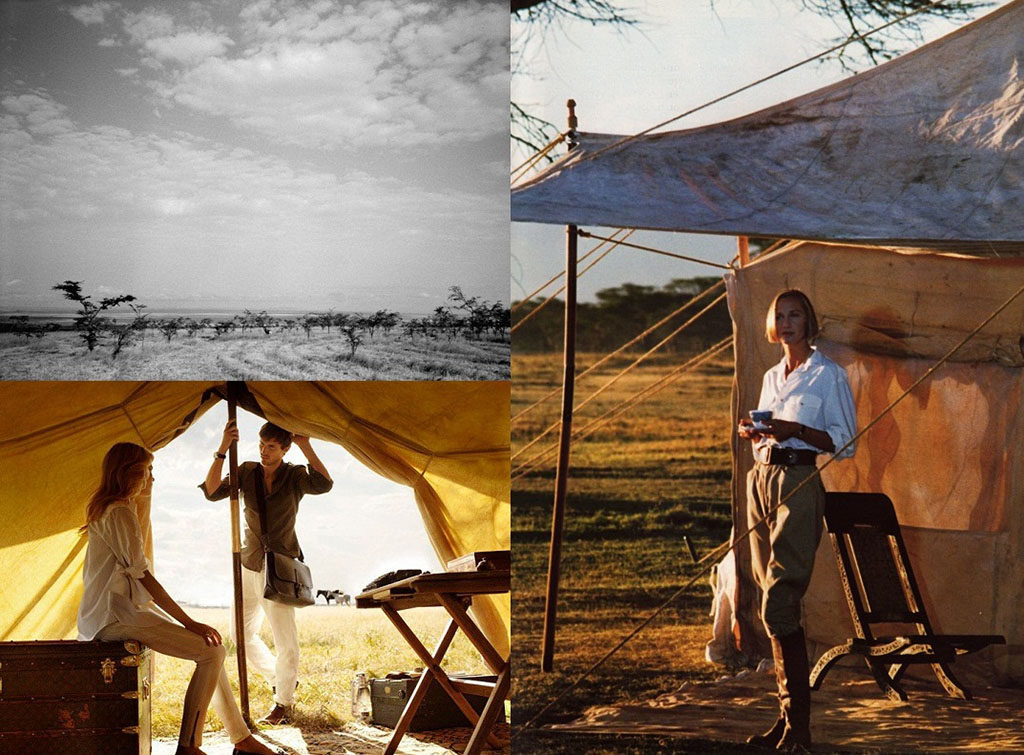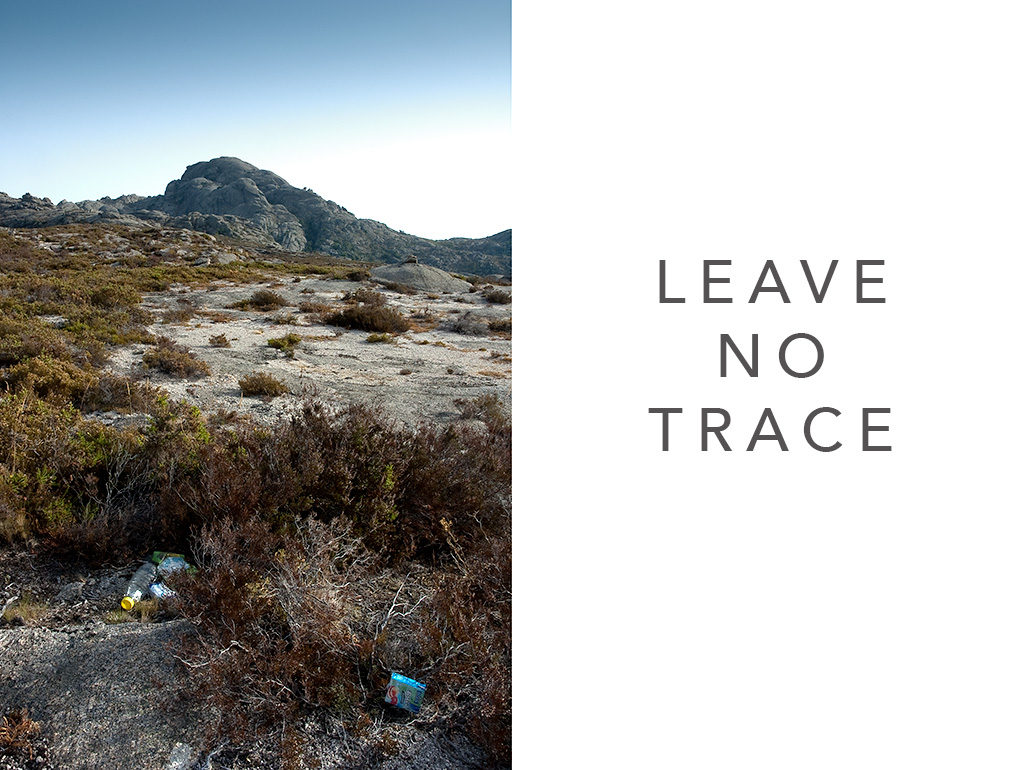Everything you need to know to enjoy a night in the wilderness. From planning, to selecting the perfect spot, to adopting the right attitude towards nature and others. As always we’ve got you covered !
Camping in the wilderness is a very important part of adventure travel. If you don’t get it right and can’t rest properly, soon enough you’ll run out of energy and quit. To some, including myself, what matters is to stay warm, dry and remotely comfortable. To others, like my wife, anything lacking the comfort, service and care of a Four Seasons Presidential Suite, is simply out of the question. Most will lay in between. Regardless of your style, there are a few basic rules to follow if you want it to be a success.
Table of contents
- Planning Ahead – Know where you are going to camp
- What makes a good campsite ?
- Leave No Trace
- Respect Wildlife
- Conclusion
Planning ahead – Know where you are going to camp.
There is a lot more to it than just choosing a spot on a map. To most, that choice is solely determined by the natural attractiveness of the location. Yes, that spot on the edge of the cliff overlooking the canyon you have in mind for tonight looks fantastic. Yes, but!
Is it legal ?
Wilderness camping isn’t legal everywhere, far from it. I just came back from Oman where you can camp anywhere. I’m now staying in France, where by law “le Camping sauvage” (wilderness camping) is strictly forbidden. In the US, when in National Parks, you must buy a permit to camp out, and in some cases can only do it in designated areas. Everywhere is different, make sure you know the rules to avoid unpleasant surprises. Like having to move out in the middle of the night, after having signed your pricey fine for “trespassing”.
Is it accessible ?
Ok, so now you know you can stay there legally (Or are willing to take the risk to stay there despite the unfriendly local guidelines – your bad!) But can you get there, and if you don’t, do I have a back-up plan? Sounds like a stupid question? Think again!
First, is the distance between you and your destination feasible during day time, or is it a stretch ?
Ideally you should be able to fit in various stops along the way (food, culture, rest…), leave some time to cope with eventual complications (getting lost, fixing material issues, etc…), and still arrive on site early enough to select and enjoy the perfect setting while it is still light. If you must keep on pushing full speed ahead just hoping to make it before it’s too late, you picked the wrong spot !

Second, is that dream spot of yours accessible by whatever means of travel you chose ? Can your rig get to the edge of that canyon, or will you be forced to leave it 500 meters away and climb up (and then back down) with all your gears? Knowing how to correctly read a map helps you finding the answer.
What are the environmental conditions in that area ?
Ok, legal and accessible, this is starting to look good. But now that we mention it, what does it actually looks like there? Is it so dry you won’t be able to make a campfire safely? Or is it so wet the area will be filled with bugs ? What are the temperatures at night there ? Will it be too cold or too hot ? If you don’t have any precise answers in regards to the natural conditions of your designated campsite, how can you plan for the right gears? Again, do your research. Maps, local weather reports, testimonies from fellow travelers…
Is it the right time ?
We have touched the weather aspect of timing above. What I’m talking about here is crowd. An isolated beach during the week can become a full on party spot on week-ends. Best to find out how popular it gets before arriving there.
What makes a good campsite ?
campsites should be found, not made.
Now that you have done your homework on your dream location, let’s see how to choose the right spot once there. As mentioned in the planning section, don’t wait for darkness. You can only make the right choice if you can see your options.
Ideally, you should look for a spot where you won’t have to move anything away. (Rocks, branches) If you do, you’re destroying natural habitats. You should also consider a place that has been used already. As they say, “campsites should be found, not made.” If not, look for hard surfaces like gravels, dry grass or snow, and avoid places where impacts are in early stages.
Protection from the elements.

© Jason Mandly
Wind.
Figure out the wind direction and choose accordingly. Bushes, a large rock, anything that will block the air flow from getting you even colder during the night. Don’t build anything for it, use what is already there.
Water.
As much as you should try to camp near water, don’t get too close. No less than 60 m from a water source. First because you don’t want to contaminate that water. Second because flash floods and wildlife can be a hazard at night. Not to mention the numerous bugs found around pounds. When setting up your tent, make sure you are not on a “traffic lane”. Those are the tracks used by animals to reach the water. Look for paw markings on the ground for clues.
Caves.
Caves are a great way to protect yourselves from the environment. However they are very popular among wild animals not keen on sharing it with you. Inspect it carefully before calling it home. That includes the dark corners !!
Trees.
A good choice is a Pine tree with low branches close to the ground protecting you from the elements. But trees are to be avoided during thunder storms as they attract lightning. Same when it rains, because water will drop on you for hours and keep you awake. If windy remember that broken branches can come crashing down on you.
Discretion.
Try not to be obvious. The best way to be left alone is to be discrete. As such move away from the trail you followed to reach the area.
Leave no Trace.
Think of yourself as a guest of nature. After all you’ve come this far out in the wilderness because you enjoy nature’s beauty. It seems logical to me you should then keep it that way. In other words, the place you’ll leave behind tomorrow should look as good as the place you found when you arrived (if not better).
Less is more.
The more gears you bring along, the more space you’ll need to set them up for camp. The more space you use, the more damage you create on the ground. The “Out of Africa” style of camping with your Louis Vuitton trunks stacked up next to your four poster bed, underneath your pristine white cotton tent, where you’ll pause for the night while writing your memoirs, is obviously going to leave a bigger imprint than a solo ultra light tent. Therefor, if you remotely care about the environment you came to admire, you should seriously consider a more minimal approach to camping and stick to what is really necessary.

© ralph Lauren
Campfire.
It’s part of the wild camping attraction. A night under the stars by a nice fire keeping you warm. But is it really a must? not really. Unless it’s really cold and you need it to keep you warm (then you didn’t bring the wright gears) or because you need it to cook. (A portable gas stove is far more practical), there is no real point considering the impact it has on your direct environment.
I could make an entire article on how to make a fire. For our purpose here I’ll just advise you to first check if it is allowed. Then keep it small and try to use an already existing fire pit/ring placed away from plants on the ground. Use only sticks you can find, don’t go cut branches. Let it burn all the way to ashes before you put it out. Last, if you created a fire hole, refill it when you leave.
Don’t be loud.
Remember, you are never alone. (This applies to the respect wildlife section below as well)
Clean up !

Having to write about this gets me all up-tight. It reminds me of all those times when I got to a beautiful spot, only to find it littered with trash left by previous campers.
Take your trash with you. No one is here to do it for you !
Cleaning up takes time. You should plan for it in your traveling schedule. It means inspecting your campsite and making sure you took everything with you, no matter how small it is (Cigarette butts for example). If you came with a motorized vehicle, inspect for leaks. (Oil leaks left behind is never a good thing.)
One more point about being clean. It’s called shitting in the woods. (There is an excellent book on the subject by Kathleen Meyer.)
To the point: Don’t do it near water. Dig a hole, use a biodegradable white and fragrance free toilet paper, (and don’t use the entire roll !) Then, fill up the hole once you are done. When you pee in the wild, try to do it on a loose surface like gravels, pine needles, etc… Try to dilute it with water. Why ? The smell of urine attracts wild animals, which is another good reason not to do it next to your tent !!
Respect Wildlife.
Talking about wildlife, they live here too. When choosing a campsite, make sure you are not disturbing animals. A hole in the ground could be the entrance of a burrow. Once its owner feels threaten, it will abandoned it for good. Don’t force anyone out so you can enjoy a view.
Look for markings on the ground. You should know how to recognize the footprints (It’s part of the planning). If Grizzly bear prints are all over, be clever, look further. After all, if the place is attractive to you, it probably is also to animals.
Look up as well, nests in trees or hornets hives are hints you should move further. (Your fire will drive wasps and hornets nuts and make your life hell!)
Don’t feed the animals, keep your pets on a leash, and store your food in secure containers.
Conclusion.
This may sound like a lot of rules, it isn’t. It’s actually very simple. In the end it’s all about RESPECT. Respect of Nature, Respect of Others, Respect of One Self. By being considerate and conservation-minded, we keep the wild a beautiful place to explore for everyone. While selfish and ill-considerate behaviors, lead to more restrictions from authorities tired of having to clean up after us.
If interested to learn more about the Leave No trace programs, here are two links I invite you to follow.
Wilderness.org and scouting.org
Make sure to check LostandCurious.com other tutorials dedicated to camping to enjoy the experience fully.
Happy camping !
Title picture by Getty images.

Pretty cool post. It’s truly very nice and beneficial post.Thanks for sharing this with us!it is my first stop by.